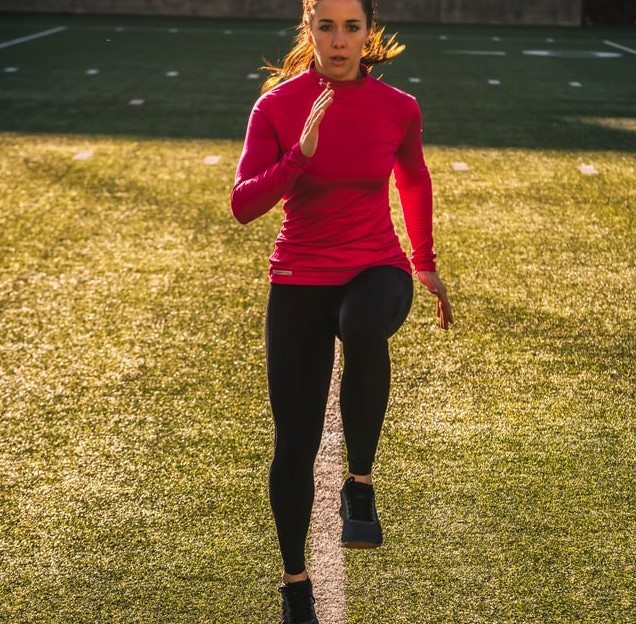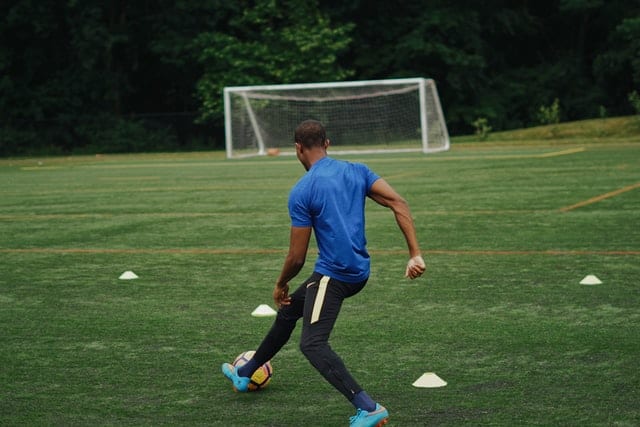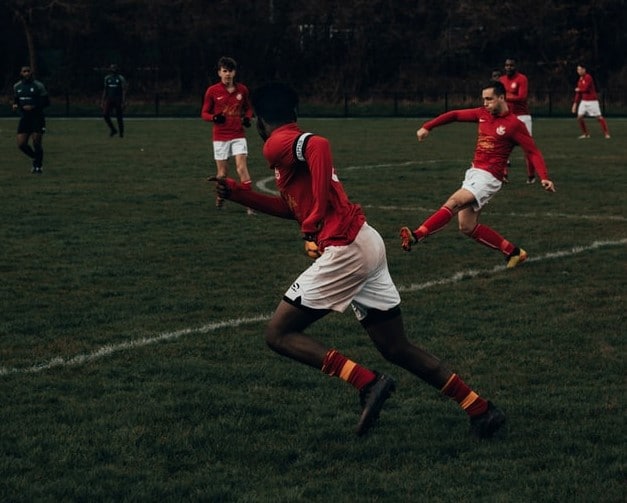Running is one of the most fundamental requirements for any soccer player. If you can’t survive running during the whole 90 minutes of a professional soccer game, then you won’t be considered a professional soccer player no matter how good your skills are.
So, if you’re into soccer and you want to practice running in order to start playing with your friends and family, or maybe professionally, then here are some exercises that can help you.
I learned some of the exercises that I’m going to list from professional soccer players during the soccer training camps that I attended a few years ago. I also learned some of them from watching the training sessions of some of the top soccer clubs around the world.
Here we go, the following is a list of some running exercises that you can do as a soccer player.
1- Start with a slow warm up
Starting slow is extremely important whenever you want to engage in any soccer training exercise. You need to warm up your body before you start the heavy exercises, or else you might hurt your muscles.
Warming up before any exercise is important in order to prevent any high risks of injury.
As this heart.org article states, warming up supplies your muscles with enough oxygen, lowers the risks of injury and so much more.
With that said, always start your running exercises with a few minutes of jogging. Jogging is a great warm up for your body. It would also be great if you do some hand movements while you’re jogging.

For example, start with jogging only, and then while jogging, try to extend your hands and rotate them in full circles, or do any other hand movements that you are comfortable with.
During every training session in the training camp, the first thing that we had to do was to jog around the soccer field multiple times as a warm up exercise. The field that we trained on was smaller than the official soccer field size though.
2- Alternate between sprinting and jogging in opposite directions.
Sprinting and explosive runs are the major ways a soccer player runs on the soccer field. In other words, soccer players run in full speed short bursts and in different directions instead of running slowly in a constant speed in the same direction.
With that said, if you want to do well in a soccer match, you have to increase your sprinting endurance.
Here’s an exercise that can help you do that:
Place 4 or 5 cones in a straight line and make sure that they are equidistant from each other. If you don’t have cones, use anything else as long as you can tell where the marks are.
Stand a few yards/meters away from the cones but make sure that you’re on the same straight line that they’re forming.
Then sprint towards the first cone, and jog back to your initial position, then sprint towards the second cone and jog back towards your starting position and so on until you reach the last cone.
This exercise will help you practice the short and instant sprints that you need during any soccer match.
You can also use the same exercise to practice jogging backwards. Do the same exercise but instead of turning around and jogging towards your initial position, try to run backwards towards it.
3- Run in a square motion
Place 4 cones in a way that makes them form a square. Then run on the sides of this square. Make sure that you alternate between sprinting and jogging.
For example, stand on one of the cones, then sprint towards the next cone, then instantly make a 90 degrees turn and sprint towards the next cone. Repeat the same thing but while jogging and keep looping around the square until you feel you need some rest.
This exercise is different from the one above in that it makes you make an instant 90 degrees change in your running direction. This helps you improve your agility skills. Agility is one of the most important skills to have as a soccer player.
4- Zig zag run
Place a number of cones in a straight line and make sure that they are equidistant from each other. Also make sure that they’re close to each other.
After you set up the cones, run in a zigzag motion around them. For example, run around the first cone from the left, then run around the second cone from the right, then run around the 3rd come from the left and so on. When you reach the last cone, run around it in full circle then repeat the same motion towards the other end.

Again, this type of motion improves your agility as a soccer player. You will be changing your running direction a lot during a soccer match, and this zigzag running exercise helps you practice exactly that.
5- Sprinting while randomly changing your direction
Place 5~6 cones on the field in random positions. Make sure that they are far enough from each other. Then pick one of these cones as a starting point, pick one as a destination point, and then sprint towards that destination.
Once you reach the destination cone, immediately pick another one randomly and sprint towards it. You can use jogging instead of sprinting when you feel tired, or you can just stop and take some rest if you’re super tired.
This exercise is also a great agility exercise. It’s different from the zigzag run in that the next running direction is unpredictable and that the sprints are longer.
6- zigzag side running
Place your cones in a way that makes them form a zig zag line. Stand on the first cone and then run towards the next cone, then the next one and so on.
However, make sure that you’re always facing one direction when running. In other words, you’re going to be doing side runs in a zigzag motion.
This type of running is heavily used by soccer defenders. When a defender is standing in front of their opponent who has the ball, they keep their distance from the opponent by doing side runs while keeping their body facing the opponent.
In other words, Side running is extremely important in soccer and this exercise can help you practice it.
With that said, I’ll end my article here. One last note though. Try to do the above exercises both with and without a ball. Running while having to control the ball is harder than running without the ball. So, don’t always just do these exercises without using a soccer ball as practicing running with the ball is also essential.

